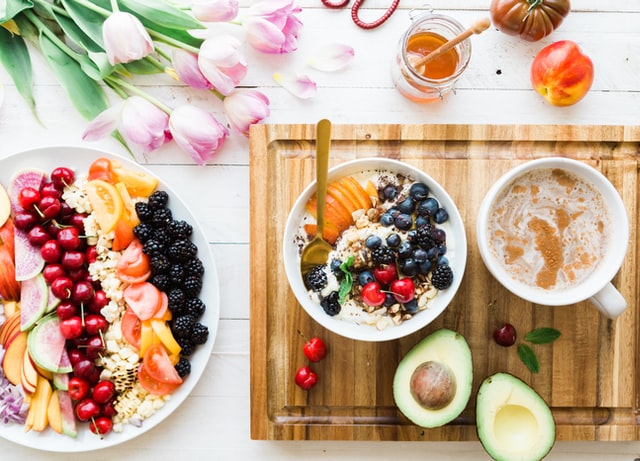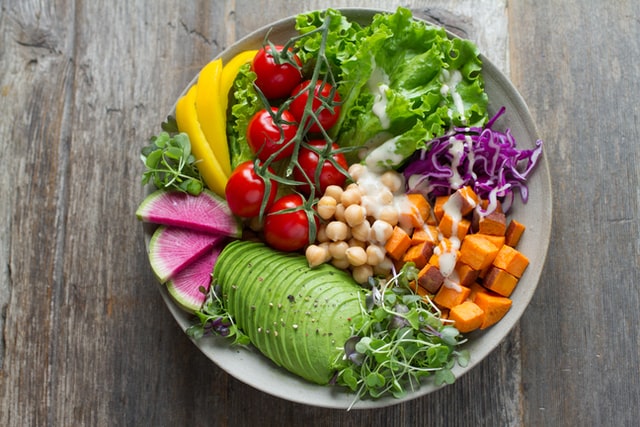Deciding to transition to a healthier diet can be daunting. It seems like there are so many things to consider: what foods to eat, how to cook them, and what kind of lifestyle change you need to make.

But with a little bit of planning and preparation, you can make the transition much easier on yourself. Here are some important tips that will help you make the switch to a healthier diet without feeling overwhelmed.
FIND THE RIGHT DIET FOR YOUR LIFESTYLE
When it comes to diet, there’s no one-size-fits-all approach. What works for someone else might not be right for you. That’s why finding a diet that fits your lifestyle and preferences is important. For example, if you’re vegan or vegetarian, you can still eat healthfully by focusing on whole plant foods like fruits, veggies, nuts, and seeds. You may also learn more about a liquid diet if you feel like you need to detox your body or lose some weight quite quickly. If dairy isn’t an issue for you, you could try the Mediterranean diet which focuses on fish, olive oil, and lots of fresh produce. The key is experimenting with different diets and finding one that works for you. Also, make sure to ask for advice from a nutritionist if you need help finding the right plan.
1. Dairy Alternatives
If you’re used to drinking milk or eating dairy products, it can be tough to give them up. But there are plenty of delicious alternatives available. Soy milk, almond milk, and coconut milk are all great substitutes for cow’s milk.
You can also look into the benefits of drinking either coconut milk or water and which is better. And if you’re worried about missing out on the calcium in dairy products, don’t worry – there are plenty of calcium-rich non-dairy foods like tofu, leafy greens, and sesame seeds.
For example, you can make a tofu scramble for breakfast, add some kale to your lunchtime salad, or sprinkle sesame seeds on your dinner stir-fry.
2. Cut Out Processed Foods
One of the best things you can do for your health is to cut out processed foods. This means avoiding anything that comes in a box, bag, or can and is loaded with sugar, salt, and unhealthy fats.
Instead, focus on eating whole foods like fruits, vegetables, whole grains, and lean proteins. Cooking at home from scratch is the best way to avoid processed foods, but if you’re short on time there are plenty of healthy pre-made meals and snacks available at the grocery store.
Just be sure to read the labels carefully and watch out for hidden sugars and fats.
3. Eat More Plants
Filling up on plants is a great way to make sure you’re getting the nutrients your body needs. Aim to eat at least five servings of fruits and vegetables a day.
You can do this by starting your day with a green smoothie, adding a big salad to your lunch, and eating a veggie-packed stir-fry for dinner. If you’re not used to eating so many plants, it might take some time to get used to the change in texture and flavor.
But there are plenty of ways to make veggies taste delicious, like roasting them in the oven with some spices or adding them to soups and stews.
4. Limit Your Intake of Animal Products
If you’re used to eating a lot of meat and dairy, it’s important to start limiting your intake. Animal products are high in saturated fats and cholesterol, which can lead to health problems like heart disease and stroke.
Instead, focus on eating more plant-based proteins like beans, lentils, tofu, and tempeh. You can also get the protein you need from nuts, seeds, and whole grains. And if you do eat animal products, make sure they’re lean and low in saturated fat, like chicken or fish.
5. Get Plenty of Healthy Fats
Contrary to popular belief, not all fats are bad for you. Your body needs healthy fats to function properly.
Good sources of healthy fats include avocados, olive oil, nuts, and seeds. These types of fats will help you feel full and satisfied after eating, and they also have some great health benefits.
For example, olive oil is a good source of antioxidants, which can help protect your cells from damage.
6. Drink Plenty of Water
Water is essential for your body to function properly. It helps to flush out toxins, transport nutrients to your cells, and keep your skin looking healthy.
Aim to drink eight glasses of water a day, or more if you’re active or live in a hot climate. If you find it difficult to drink that much water, try carrying a reusable water bottle with you everywhere you go or infusing your water with fruits and herbs to make it more flavorful.
On top of everything, it’s important to get moving and be active every day. Exercise is a great way to boost your energy levels, improve your mood, and promote overall health.
If you’re not used to exercising, start slowly by taking a brisk walk around the block or going for a light jog. Following a healthier diet doesn’t have to be difficult or boring.
With a little planning and effort, you can easily make the switch to eating healthy, nutritious food. Just remember to focus on whole foods, limit your intake of animal products, get plenty of healthy fats, drink plenty of water, and move your body every day. Soon, you’ll be feeling better than ever!
Related Posts:
- A Useful Guide On How To Make A Healthy And Balanced Diet For Your Child
- 5 Tips to Help You Maintain a Healthy Weight-Loss Diet
- Vitamins And Diet: Can You Get All Your Vitamins From Food?
- What’s the Difference Between a Keto and a Low-Carb Diet?
- How To Make a Diet Plan for Weight Loss
- How to Get Kids to Eat Vegetables and Healthy Foods
- 7 Ways to Sustain a Healthy Lifestyle At Home